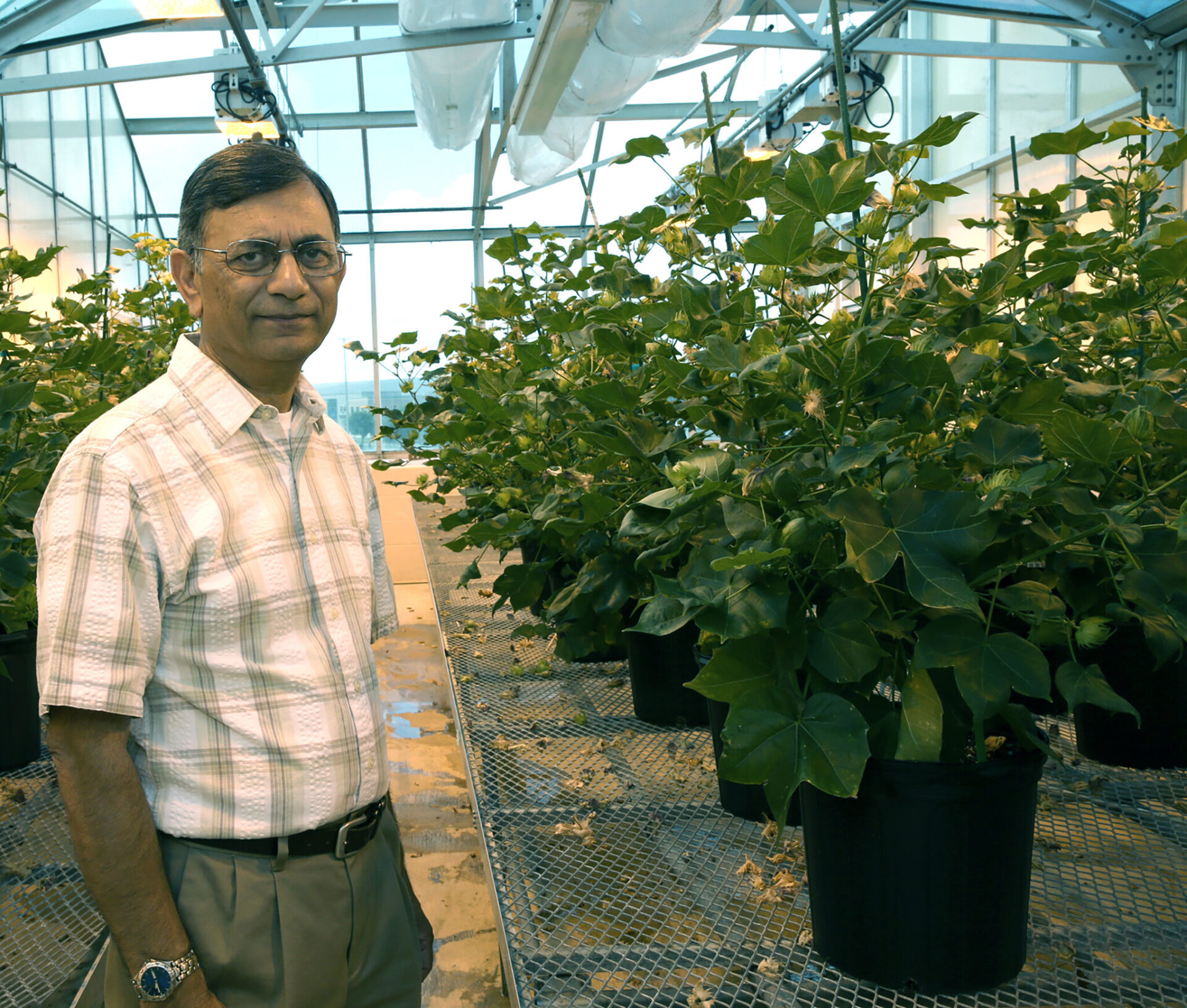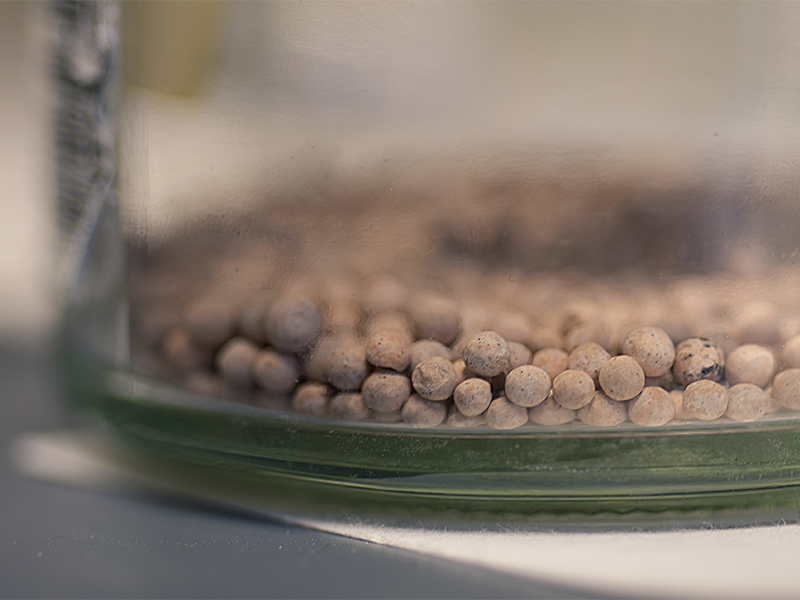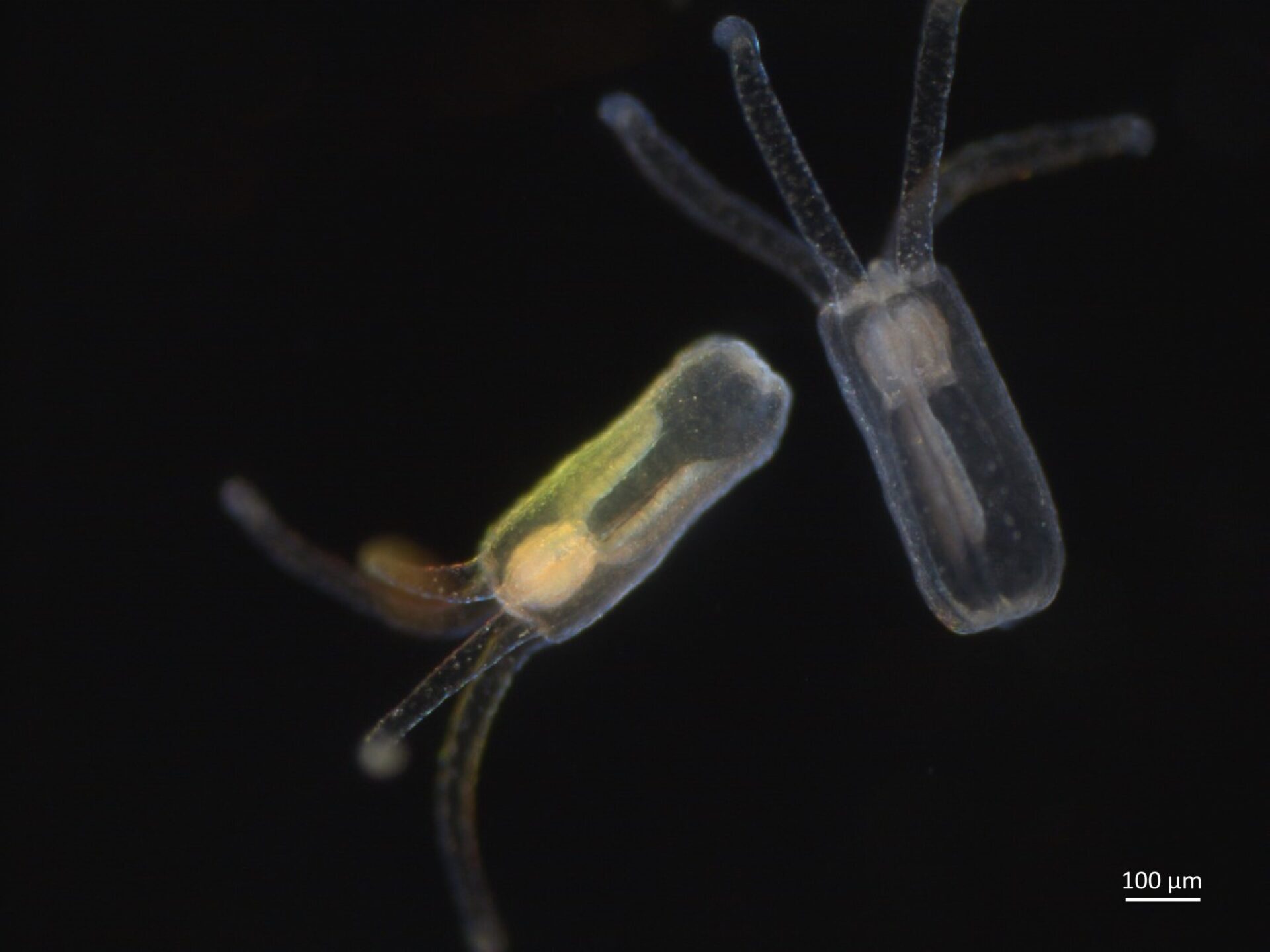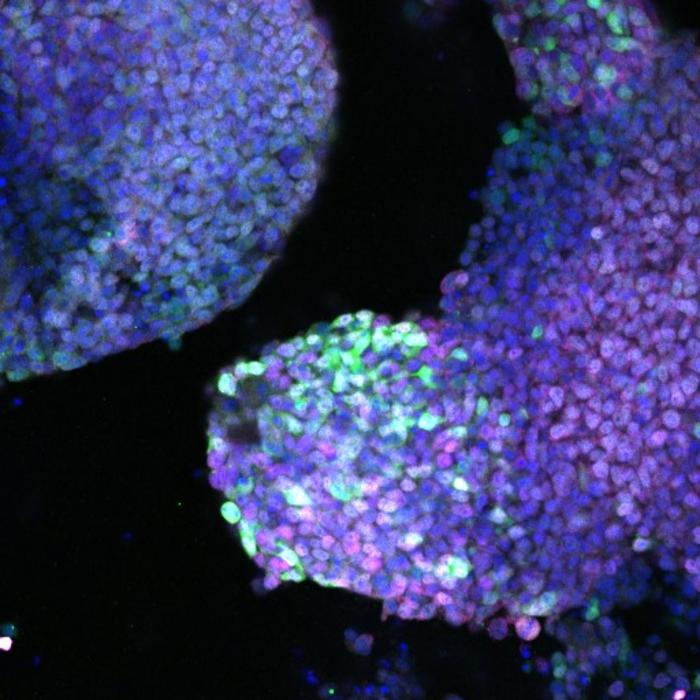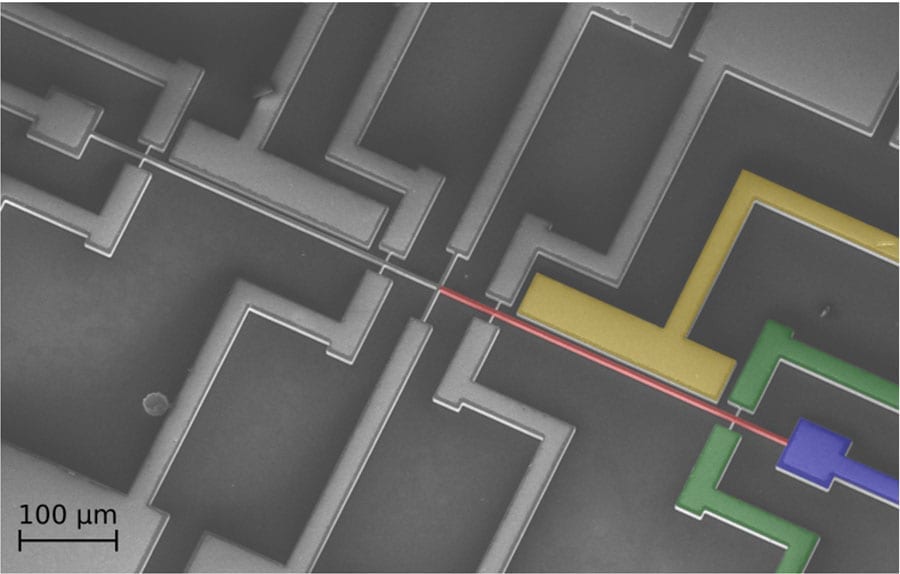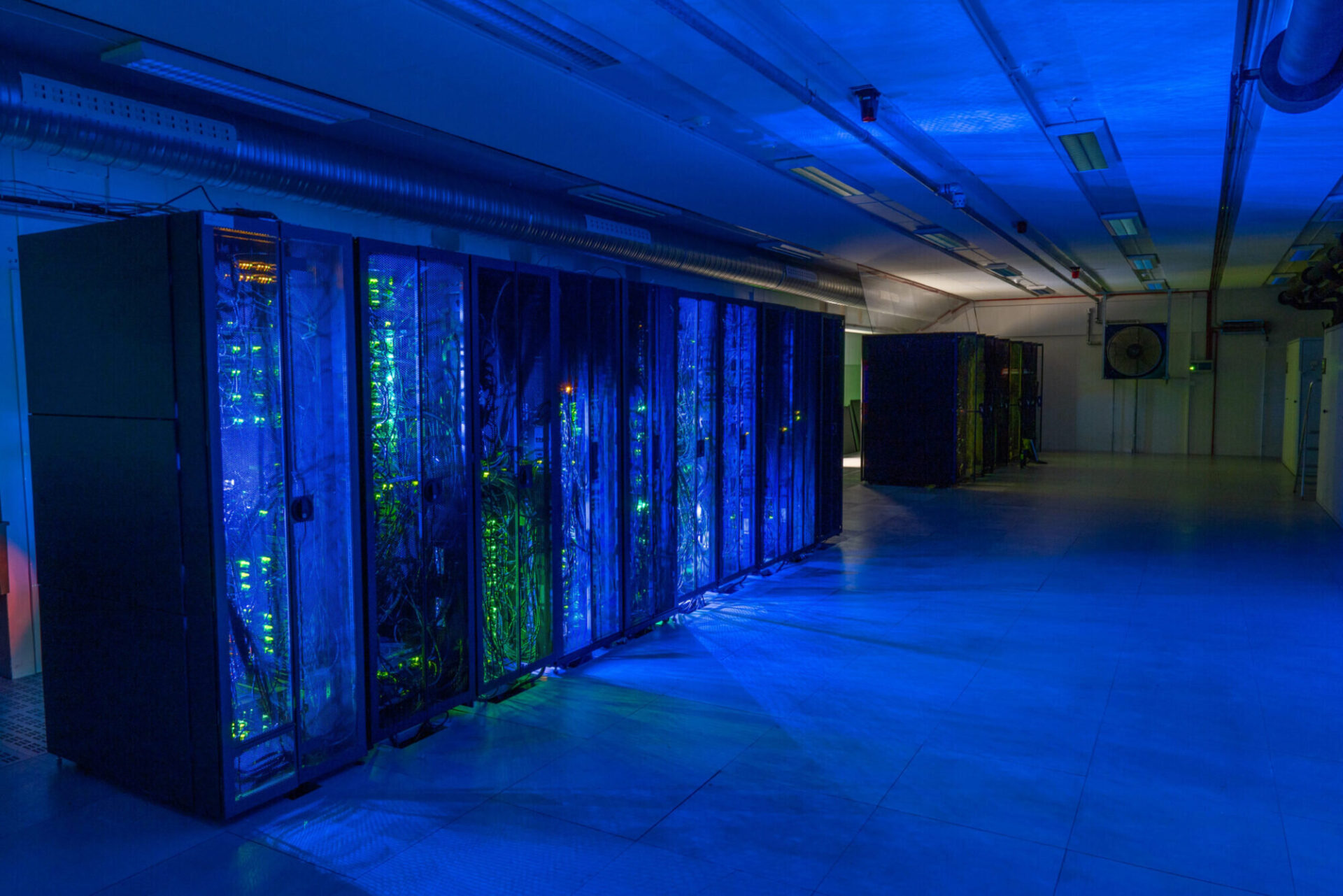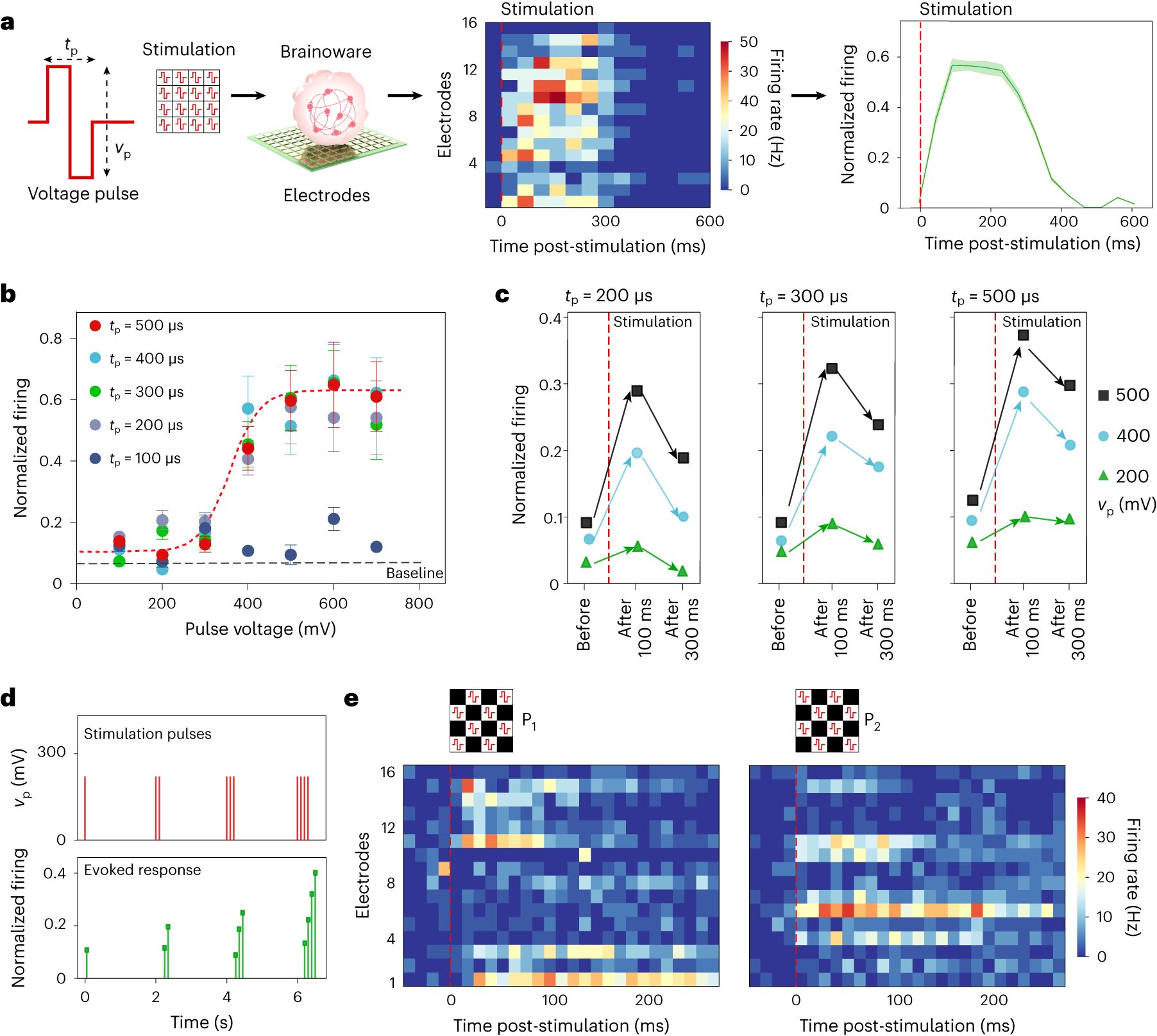
via Indiana University
IU bioengineers are building the intersection of brain organoids and AI
Feng Guo, an associate professor of intelligent systems engineering at the Indiana University Luddy School of Informatics, Computing and Engineering, is addressing the technical limitations of artificial intelligence computing hardware by developing a new hybrid computing system—which has been dubbed “Brainoware”—that combines electronic hardware with human brain organoids.
Advanced AI techniques, such as machine learning and deep learning, which are powered by specialized silicon computer chips, expend enormous amounts of energy. As such, engineers have designed neuromorphic computing systems, modeled after the structure and function of a human brain, to improve the performance and efficiency of these technologies. However, these systems are still limited in their ability to fully mimic brain function, as most are built on digital electronic principles.
In response, Guo and a team of IU researchers, including graduate student Hongwei Cai, have developed a hybrid neuromorphic computing system that mounts a brain organoid onto a multielectrode assay to receive and send information. The brain organoids are brain-like 3D cell cultures derived from stem cells and characterized by different brain cell types, including neurons and glia, and brain-like structures such as ventricular zones.
“Brainoware uses a human brain organoid as an adaptive living reservoir to conduct unsupervised learning by processing spatiotemporal information through the neuroplasticity of the brain organoid,” Guo said. “Our approach allows for the advancement of AI computing as the organoids provide biological neural networks with certain complexity, as well as low energy consumption and fast learning.”
The team’s work appears in the newest issue of “Nature Electronics,” which features leading research from all areas of electronics.
In developing its hybrid computing system, the team demonstrated the major potential for brain organoids to advance the capabilities of reservoir computing, a type of artifical neural network based on the idea of capturing and remembering information based on a sequence of electrical stimulations. In a series of tests, Brainoware was able to quickly recognize speech patterns as well as perform complex nonlinear mathematical equations.
“Through electrical stimulation training, we were able to distinguish an individual’s vowels from a speaker pool,” Guo said. “With the training, we triggered unsupervised learning of hybrid computing systems.”
Since 2016, Guo has disclosed several inventions to the IU Innovation and Commercialization Office ranging from acoustic technologies to biomedical devices for tissue engineering. The IU ICO works closely with faculty, industry and the entrepreneurial community in Indiana to take IU innovations to market.
Guo has been awarded several major grants in recent years for his groundbreaking work on lab-on-a-chip technology with AI and an opioid overdose detection patch. His lab is currently focused on the development of intelligent biomedical systems through the innovation of AI, devices, sensors, and systems for life science and translational medicine applications.
Original Article: IU bioengineers are building the intersection of brain organoids and AI
More from: Indiana University
The Latest Updates from Bing News
Go deeper with Bing News on:
Hybrid neuromorphic computing system
- Intel unveils 1.15bn neuron neuromorphic system, Hala Point
Intel has built the world's largest neuromorphic system, a computing system that is modelled after the human brain and nervous system. Code named Hala Point, the 1.15 billion neuron system advances ...
- Intel's Hala Point, the world's largest neuromorphic computer, has 1.15 billion neurons
The Hala Point system's 1,152 Loihi 2 chips enable a total of 1.15 billion artificial neurons, Intel said, "and 128 billion synapses distributed over 140,544 neuromorphic processing cores." That is an ...
- Intel builds world’s largest neuromorphic system
The system, code-named Hala Point, has initially been deployed at Sandia National Laboratories, and uses Intel’s Loihi 2 processor. It is intended to support research into future brain-inspired ...
- Intel builds world’s largest neuromorphic system
We give accounts on Intel’s virtual cloud, and they log in and access the systems remotely.” Intel was able to build a practical, usable, neuromorphic computer by sticking with traditional ...
- Intel unveils brain-inspired neuromorphic chip system for more energy-efficient AI workloads
In the meantime, it’s nice to see the long-ailing Intel at the forefront of neuromorphic computing’s development. The Loihi 2 system looks extremely promising, but it’s not yet close to ...
Go deeper with Bing News on:
Brainoware
- Seminar discusses agriskills enhancement
The Department of Agriculture at Brainware University hosted a one-day National seminar on 20 April. The topic of the national seminar was “Agriskills towards Nutritional Security and Sustainability”.
- Widodo to meet Apple CEO at Merdeka Palace
President Joko Widodo (Jokowi) is scheduled to meet Apple Chief Executive Officer (CEO) Tim Cook at the Merdeka Palace in Jakarta on Wednesday (April 17, ...
- Indiana University
Beyond-the-ordinary research includes a new hybrid computing system called "Brainoware" that combines electronic hardware with human brain organoids to deliver advanced AI computing with low ...
- Neurogenesis News and Research
Study in Nature Electronics introduces "Brainoware," an innovative AI hardware approach using brain organoid neural networks for complex tasks like speech recognition and nonlinear dynamic ...
- Brain Cell News and Research
Study in Nature Electronics introduces "Brainoware," an innovative AI hardware approach using brain organoid neural networks for complex tasks like speech recognition and nonlinear dynamic ...

